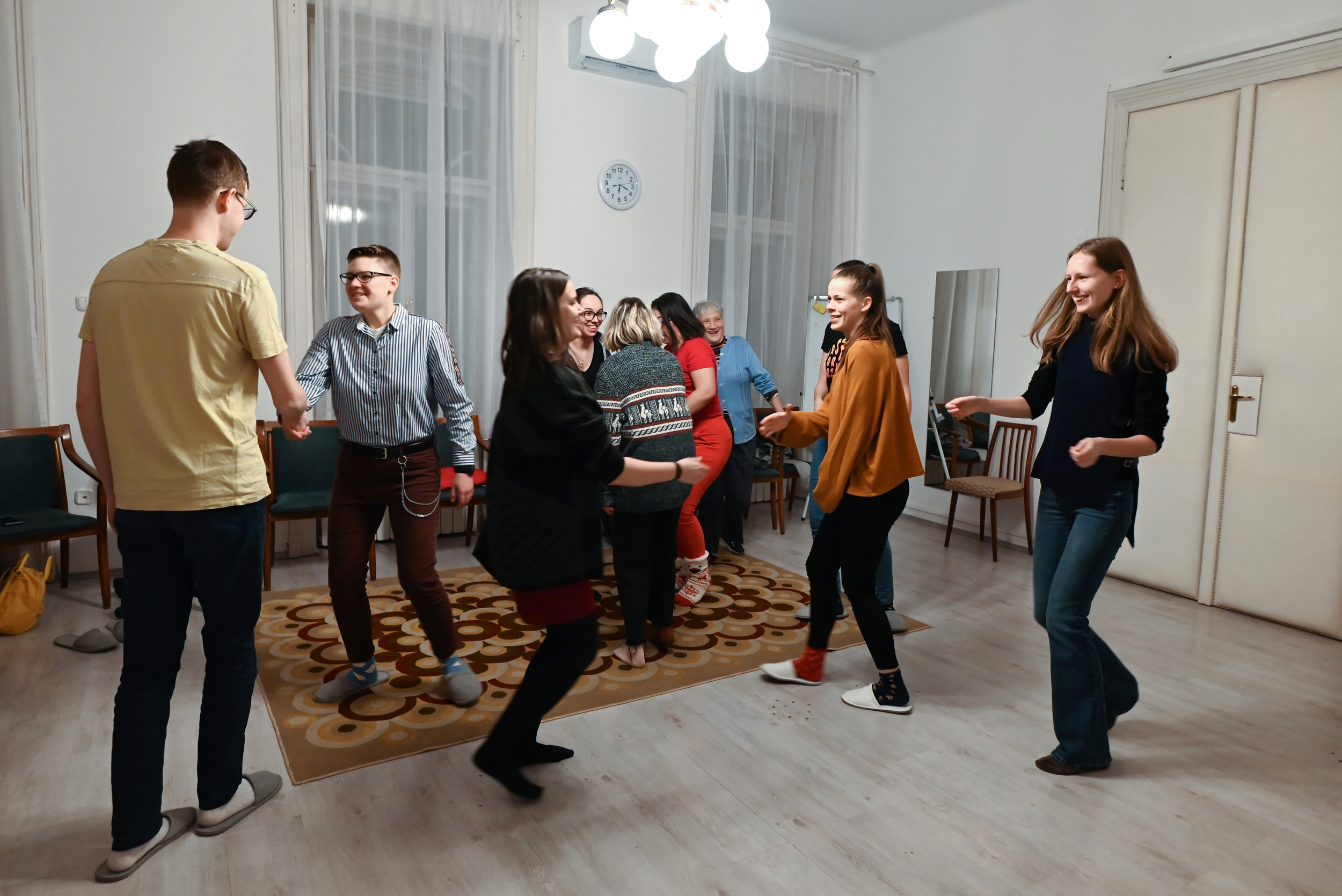1, 2, 3
27

Category
rhythmic
Age
8+
Number of participants
4+
Duration
approx. 10 min.
Working method
- played in pairs
- group work
Musical abilities of the trainers
1 2 3 4 5 6
Competences
- concentration
- collaboration
- attention
- cooperation
- creativity
- sence of rhythm
1, 2, 3
1,2,3 is a simple rhythm game, played in pairs.
It can be developed to play in larger groups.
AIM
The aim is to improve the rhythm skills and concentration of participants while also ice breaking & team building.
Description
Choose a partner & stand facing each other
Group leader demos Round 1 – and sets the Rhythm & pace for everyone to follow.
Round 1
Pairs count to 3 repetitively, alternating numbers
a) 1, b) 2, a) 3, b) 1, a) 2, b) 3, a) 1 etc
Round 2
Replace number 1 with a clap.
Again, group leaders set the rhythm and pace.
Round 3
Replace Number 3 with a nod of the head
Round 4
Replace number 2 with a foot stomp
You can continue to replace numbers with different body hits, vocal sounds or movements.
Level up!
You can count to 5 instead
You can join 2 pairs together and go round in a circle (square!) with the same exercise.
Participants can run the exercise again and choose their own sounds, body hits, movements etc.
comments for facilitators
Start with slow rhythm and speed up gradually.
Each round, get participants to focus on the rhythm – especially after they have mastered the pattern.





Recent Comments